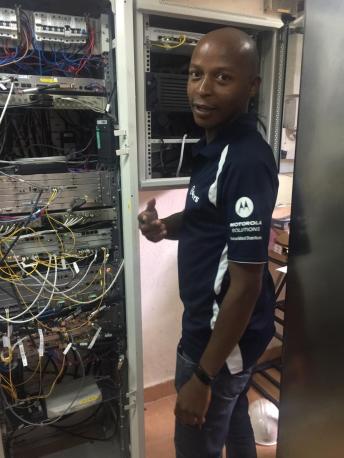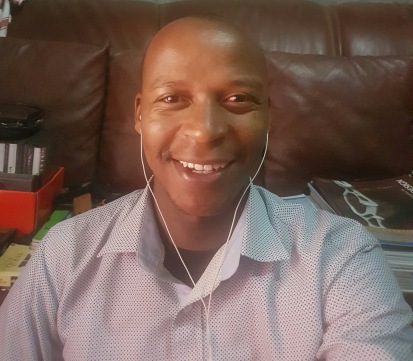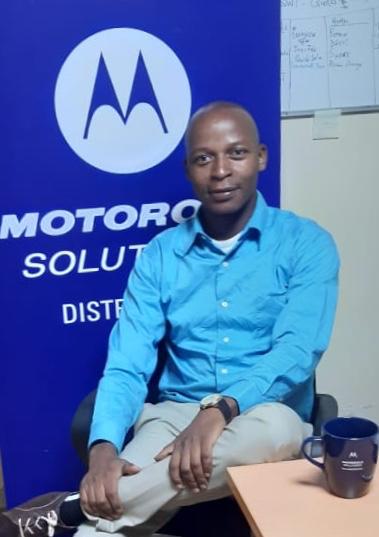Motorola Solutions provides the situational awareness first responders need following a catastrophe. In EA region, we do this via connecting such operations to seamless communication networks, applications and services by providing them with real-time information, and by arming them with intuitive, almost indestructible radios and devices. The UN/NGO team at Motorola Solutions has its presence in East Africa, and oversees the delivery of business critical communication solutions to peacekeeping, emergency response like COVID19 and development agencies worldwide.
As the global leader in push to talk two-way radio, Motorola Solutions products and services help to keep the information flowing between citizens, responders, and agencies. The EA Moto Team focus on access, data collection, actionable decision making and secure communications across mission-critical devices and easy-to-manage network. We are also a strong proponent of the establishment of regulatory standards, to help build entrepreneurial ecosystems, to make innovation happen more quickly and to act as a catalyst for growth. Ever since the adoption of the DMR Digital Radio standard over a decade ago, the capabilities of mission critical communications have expanded tremendously. Here are just some examples of how digital radio networks benefit humanitarian operations:
Safety: For personnel guarding conflict-stricken or sensitive areas, the centralised lone worker application provides reassurance and enhanced protection by requiring radio users to check in at pre-determined intervals. If an individual fails to respond to a request, an emergency alarm can be raised and automatically sent to response teams.
Tracking: Check on the progress of food distribution convoys and monitor personnel entering potentially dangerous locations with real-time GPS and indoor tracking that pinpoints their position on mapping platforms such as Google Earth. These apps can also help you to identify the person or vehicle closest to a site if a breakdown occurs and summon medical assistance when needed, speeding up response times.
Control Room: manage resources and assign tasks to the most relevant people, while at the same time improve safety and response times. Emergency calls can be broadcast to multiple groups simultaneously and direct communication can be achieved between dispatchers and remote radios for private one-to-one calls.
Telemetry: Monitor or control access to refugee camps and safeguard high-security perimeters remotely, via your two-way radio. Telemetry allows you to check on the status of machinery, power supplies, sensors and alarms, making it easier and quicker to respond to alerts.
Am super elated to be part of the team that help people be their best in the moments that matter. As a company, this is our purpose. While Motorola Solutions’ pioneering heritage and experience in public safety has enabled us to develop a wide range of mission-critical communication solutions that span infrastructure, devices, software and services, the true potential of all this technology risks remaining untapped without shared knowledge and local resources. We are proud to be part of global initiatives and humanitarian operations that link innovation in mobile technologies with concrete local priorities such as security, transparency, workplace efficiency, and economic development. In Kenya and a few other countries across our EA region, we have deployable LTE critical communications infrastructure that enables quick set up in remote locations; Interoperability solutions that enable critical group communication across broadband and radio platforms; and lastly our LTE and other radio handsets, full of functional features and built to withstand harsh environments. Our solutions are designed to deploy fast and enable reliable data-rich communications that help the development and aid sector be their best when it matters most. The ‘biggest’ challenge I see as a system engineer is the current digitisation of aid programmes and operations. The technology and expertise exists to turn noise into information, information into intelligence, and intelligence into impact, in terms of the Sustainable Development Goals (SDGs) and beyond. And it’s how to do the absolute most with less — to build safer cities within our region and communities that thrive throughout the continent and world at large. I strongly believe this is attainable by working together on technology standards, keeping network security in mind, and addressing the organisational impact of “big data.”
Compiled by : Samwel Kariuki……. 15th April 2020 #StaySafe
 collection, digital workflows, and visualization systems.
collection, digital workflows, and visualization systems.
 Typical ranges for VHF radios are: ? ?Handheld to handheld: 2 – 5 k
Typical ranges for VHF radios are: ? ?Handheld to handheld: 2 – 5 k